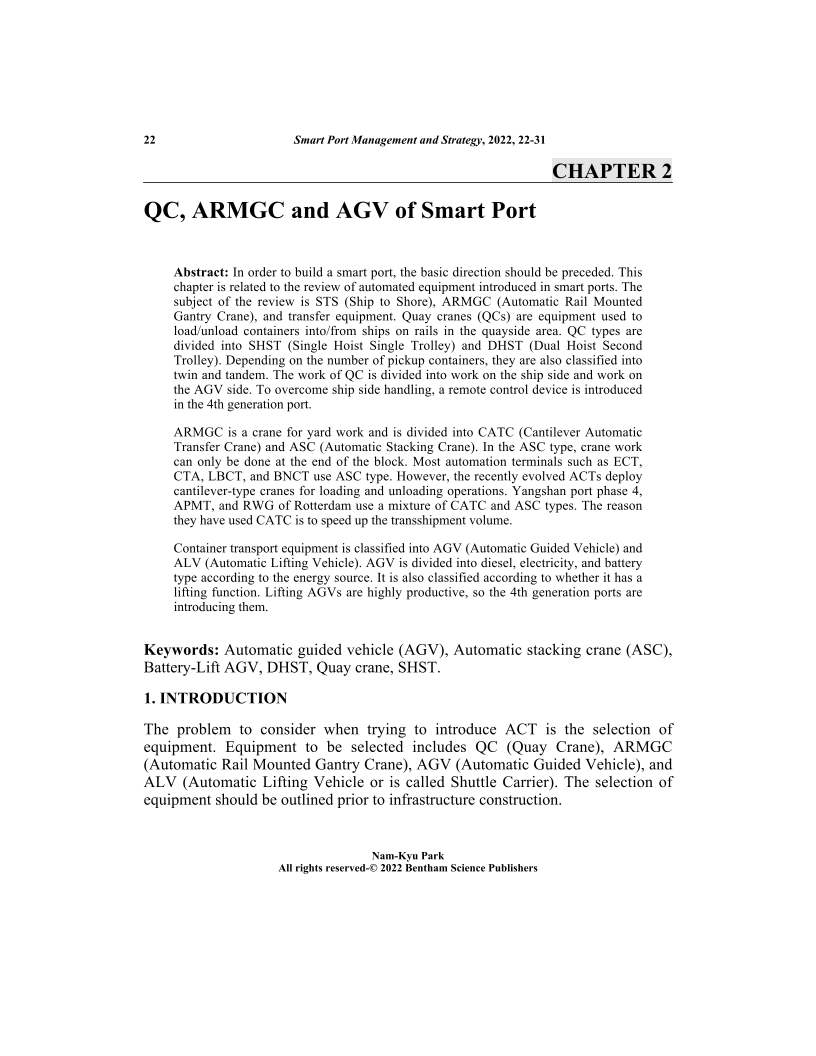QC, ARMGC and AGV of Smart Port

- By Nam Kyu Park1
-
View Affiliations Hide Affiliations1 International Logistics Department, Tong Myong University, South Korea
- Source: Smart Port Management and Strategy , pp 22-31
- Publication Date: April 2022
- Language: English
QC, ARMGC and AGV of Smart Port, Page 1 of 1
< Previous page | Next page > /docserver/preview/fulltext/9789815050417/chap2-1.gif
In order to build a smart port, the basic direction should be preceded. This chapter is related to the review of automated equipment introduced in smart ports. The subject of the review is STS (Ship to Shore), ARMGC (Automatic Rail Mounted Gantry Crane), and transfer equipment. Quay cranes (QCs) are equipment used to load/unload containers into/from ships on rails in the quayside area. QC types are divided into SHST (Single Hoist Single Trolley) and DHST (Dual Hoist Second Trolley). Depending on the number of pickup containers, they are also classified into twin and tandem. The work of QC is divided into work on the ship side and work on the AGV side. To overcome ship side handling, a remote control device is introduced in the 4th generation port. ARMGC is a crane for yard work and is divided into CATC (Cantilever Automatic Transfer Crane) and ASC (Automatic Stacking Crane). In the ASC type, crane work can only be done at the end of the block. Most automation terminals such as ECT, CTA, LBCT, and BNCT use ASC type. However, the recently evolved ACTs deploy cantilever-type cranes for loading and unloading operations. Yangshan port phase 4, APMT, and RWG of Rotterdam use a mixture of CATC and ASC types. The reason they have used CATC is to speed up the transshipment volume. Container transport equipment is classified into AGV (Automatic Guided Vehicle) and ALV (Automatic Lifting Vehicle). AGV is divided into diesel, electricity, and battery type according to the energy source. It is also classified according to whether it has a lifting function. Lifting AGVs are highly productive, so the 4th generation ports are introducing them.
-
From This Site
/content/books/9789815050417.chap2dcterms_subject,pub_keyword-contentType:Journal -contentType:Figure -contentType:Table -contentType:SupplementaryData105

